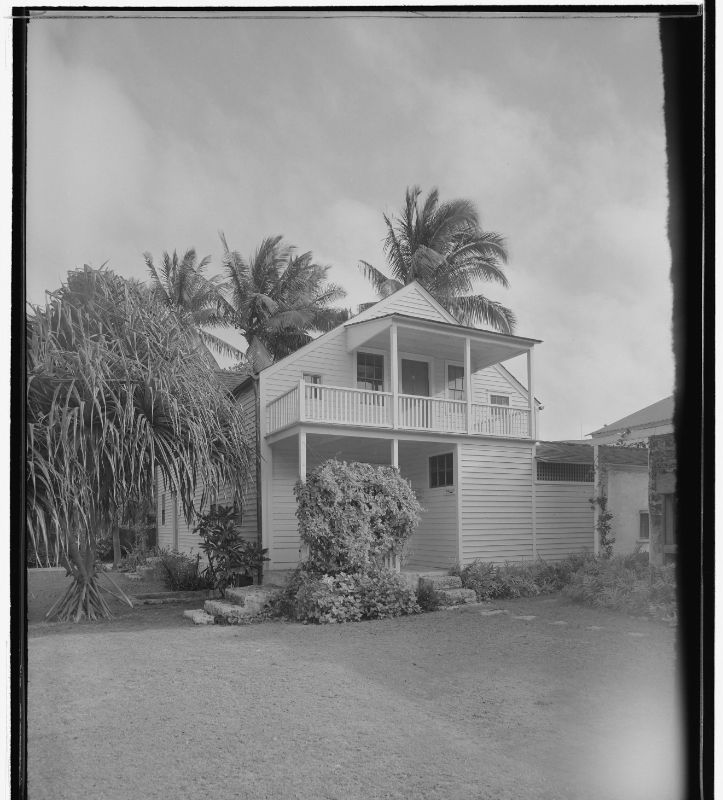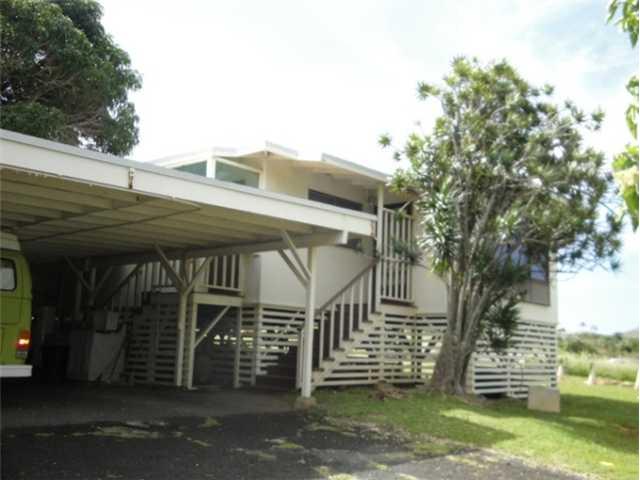Merze Tate, Professor of History at Howard University, wrote a 1961 article titled, The Sandwich Island Missionaries Lay the Foundation for a system of Public Education in Hawaii. The following is taken from that article.
“Aside from conversions, one of the most notable achievements of the Congregational and Presbyterian missionaries sent to the Sandwich Islands under the auspices of the American Board of Commissioners for Foreign Missions was the development of an educational system for the nation.”
“A broad enlightenment program for the islanders depended upon instruction in the indigenous tongue and this, of necessity, was delayed until the pioneer teachers had learned the language and reduced it to a written form. Nevertheless, before the evangelists were well settled at [Kailua-Kona], on Hawaii, and Honolulu and Waimea, on Oahu, they made a start in English.”
“The missionaries reasoned that if the masses were to be made literate within a reasonable period they would have to be taught in their own tongue.” (Merze Tate)
The cycle of missionary educational endeavor divides itself roughly into three periods: first was a decade of establishment and experimentation, lasting from 1820 to about 1831. Here the language was reduced to a written form, teaching materials were printed and adults learned the rudiments of reading and writing.
The second period, from 1831 to 1840 was characterized by a shift from adult to child education. By improvement in training teachers to teach.
Finally, the following two decades where the missionaries gradually relinquished their control of educational activities; this saw the establishment of public education under governmental control in 1840, and lasted to 1863 when the ABCFM ended the mission in Hawai‘i. (Whist)
“After the first printed sheets came from the press in the Hawaiian language, on January 7, 1822, and all were able to see their own words in print, learning to read, write, and spell was comparatively easy”.
“After the chiefs beheld their language in print they began to manifest a more lively interest in education for themselves and for their children and in the establishment and maintenance of schools for their people.”
“After the public advocacy of instruction by the highest chiefs, in April 1824, similar action came from all parts of the kingdom. Learning also received a great impulse from the personal tours of the vigorous Kaahumanu, who went all through the islands commanding the people to listen to the Kumus, or missionary teachers, and the chiefs to provide facilities for schools.”
“Because of the lack of paper and slates, writing was taught only to a very limited extent, and arithmetic hardly at all until an eight-page pamphlet on the subject was published at the beginning of 1828.”
“By 1825 the people stood waiting for instruction while the missionaries were endeavoring to bring out a new supply of spelling books, which would make possible the doubling of the number of schools.”
“Between April 1 and October 15, 1825, the mission station on Oahu distributed 16,000 copies of their Elementary Lessons [Pi-a-pa], nearly all of which were used in schools. Outside these, however, there were multitudes anxious to learn but could not be furnished with competent teachers or palapala.”
“Men and women as well as children, requested enrollment in the first schools and eagerly sought the materials of instruction by bringing at different times in the course of the season sugar cane, taro, a bunch of bananas, a fowl, or a kid, a bundle of sticks for firewood, a ball of native cord, or the offer of some kind of work to exchange for a spelling book.”
“Obviously, the few missionaries in Hawaii could not, in addition to their primary evangelical duties, personally instruct the multitude of pupils seeking education or give adequate supervision to numerous schools scattered throughout the islands.”
“It was necessary to utilize the services of Hawaiian teachers. For the periodic inspection of the numerous schools two methods were used: quarterly examination (hoike) of as many as possible of the pupils of a whole district in a convenient place, and tours throughout a district or about an island by one or more missionaries or Hawaiians appointed for that purpose.”
“The first method, however, stimulated community interest, made the youth more eager in their pursuit of the new learning, and became gala occasions, ending in a feast.”
“The evangelists’ initial educational work, despite its limitations, produced important and enduring results and laid the foundation upon which they were able to intensify their educational efforts and to establish permanent educational monuments in the 1830’s.”
“There was continued increase in the number of people receiving instruction. In 1828, 37,000 were in school, while two years later the number stood at 41,283, with 20,000 scholars on Hawaii, 10,385 or Maui, 6,398 on Oahu, and about 4,500 on Kauai.”
“The following year there were 1,100 common schools in operation with a pupil enrollment of 52,000. By the close of that year the Pi-a-pa had gone through nine editions to place a total of 190,000 copies in circulation.”
“However, at times during this period of educational expansion schools in some districts were practically deserted for work on the land or in collecting sandalwood in the forests.”
“After the heaviest pressure of adult education was over, the missionaries, realizing that the hope of the nation lay in its children, gave more attention to teaching youngsters.”
“The first school built exclusively for Hawaiian children met in 1832 in a large, badly constructed, unfurnished building which used adobe bricks for seats and desks, and had no glass windows. But even this ‘step in the ladder of progress’ was demolished in an autumn storm.”
“The Sandwich Islands Mission, in June 1831, however, resolved to establish a high school to ‘instruct men of peity and promising talents’ in order that they might become assistant teachers.”
“The school, with Rev. Lorrin Andrews as principal and sole instructor, was delightfully located at Lahainaluna, or Upper Lahaina, on a high elevation about two miles back from the port of Lahaina, on Maui. Governor Hoopili made a grant of land of one thousand acres, which concession was later confirmed by King Kamehameha III.”
“Although started as an experiment to qualify Hawaiian teachers in ‘the best methods of communicating instruction to others,’ the first twenty-five students had already taught and had had some training at the mission stations. Moreover, almost all were married men who brought their wives with them.”
“In 1833, the missionaries resolved to initiate a manual labor system in connection with the studies at the high school and in the following year decided to enlarge and put the institution on a permanent basis/”
“From Lahainaluna, on February 14, 1834, was issued the first Hawaiian newspaper, in fact the first paper west of the Rocky Mountains in the North Pacific, Ka Lama Hawaii, or Hawaiian Luminary, which contained miscellaneous instruction for the school.”
“In addition to Lahainaluna, several other educational institutions were established during the decade of the 1830’s.”
“In 1839, at the request of the chiefs, a family or boarding school was opened in Honolulu for the education of their children [Chiefs’ Children’s School, Royal School]. That these young chiefs should be in school under systematic instruction was considered of immense importance, both for their and the Hawaiian kingdom’s welfare and future.”
“The old chiefs were rapidly disappearing and if their heirs were to fill their places, they must be well prepared. They must either acquire a good education or become extinct as chiefs.”
“Up to 1840, when the mission surrendered the administration of the common schools to the government, the major share of the responsibility for the education of Hawaiian youth was in the hands of the American Protestant missionaries.”
“After that date, as we have seen, they established and continued to operate more select and boarding schools for an increasing number of Hawaiians who were able to pay something toward the education of their children.”
“The station and boarding schools for native Hawaiians which the missionaries founded were their pride, their joy, their hope, and their stronghold of the nation.”
“Through their instrumentality the evangelists expected to raise and influence an intelligent and somewhat educated people, and in this aspiration they were not disappointed.”
“Initially, the Sandwich Islands Mission – for both humanitarian and selfish reasons – resisted the proposal to make English the language of the nation and to teach the subject in all the mission schools.” (Merze Tate)
In a letter to the Sandwich Island Mission, Rufus Anderson, corresponding secretary for the American Board of Commissioners for Foreign Mission (ABCFM) in Boston, wrote on April 10, 1846: “I trust you will not fall in with the notion, which I am told is favored by some one at least in the government, of introducing the English language, to take the place of the Hawaiian.”
“I cannot suppose there is a design to bring the Saxon race in to supplant the native, but nothing would be more sure to accomplish this result, and that speedily.” (Hawaiian Language Policy and the Courts, Lucas)
The arrival of the first company of American missionaries in Hawaiʻi in 1820 marked the beginning of Hawaiʻi’s phenomenal rise to literacy. The chiefs became proponents for education and edicts were enacted by the King and the council of chiefs to stimulate the people to reading and writing.
John Laimana tells us that by 1831, in just eleven years from the first arrival of the missionaries, Hawaiians had built 1,103 schoolhouses. This covered every district throughout the eight major Islands and serviced an estimated 52,882 students.
The proliferation of schoolhouses was augmented by the printing of 140,000 copies of the pī-ʻāpā (elementary Hawaiian spelling book) by 1829 and the staffing of the schools with 1,000-plus Hawaiian teachers.
By 1832, the literacy rate of Hawaiians (at the time was 78 percent) had surpassed that of Americans on the continent. The literacy rate of the adult Hawaiian population skyrocketed from near zero in 1820 to a conservative estimate of 91-percent – and perhaps as high as 95-percent – by 1834. (Laimana)
Missionary Hiram Bingham stated that the rise in literacy and education, “was like laying a corner stone of an important edifice for the nation.”
“This legendary rise in literacy climbed from a near-zero literacy rate in 1820, to between 91 to 95 percent by 1834. That’s only twelve years from the time the first book was printed!” (KSBE)
“The Missionaries have been the fathers, the builders and the supporters of education in these Islands”. (Lee, December 2, 1847, Privy Council Minutes)
“Thus we may conclude that the educational work of the Sandwich Islands Mission was of incalculable value in disseminating knowledge to all classes of people, in the kingdom, in planting and nurturing religious concepts and some of the better features of western civilization, and in laying the foundation for a system of public instruction”. (Merze Tate)






























